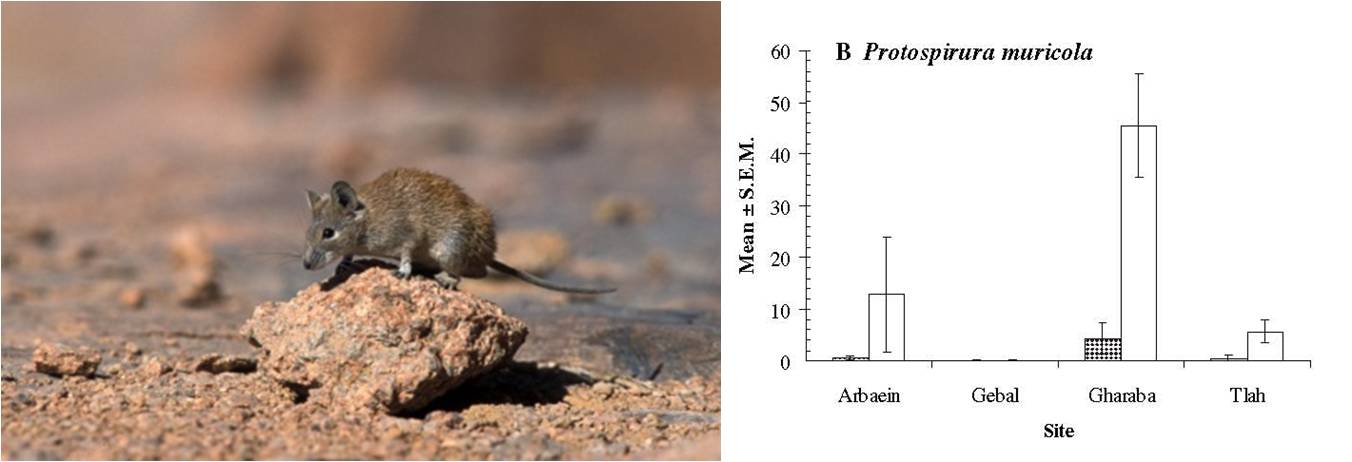| Coevolution and biodiversity of southern Sinai, Egypt | Back : Forward |
 Acomys dimidiatus & its parasite in different wadis Acomys dimidiatus & its parasite in different wadis
Led by Professor Jerzy Behnke, we have been studying the communities of parasites living on and in Sinai Spiny mice (Acomys dimidiatus) in different wadis in and around St Katherine. These communities are astonishingly different. One parasite, Protospirura muricola, can make up a huge proportion of the live weight of a mouse, but its prevalence in different wadis is very different (the graph shows prevalence in juveniles [hatched bars] and adults [white bars]. These differences are maintained stably through time: we know this as a result of having mounted four expeditions (in 2000, 2004, 2008 and 2012) to study the same set of sites at the same time of year. Differences in parasite load affect the behaviour of the mice, including the exploratory and aggressive behaviour of males. Professor Behnke is currently completing the overview of the results of the four expeditions, which will be one of a handful of studies that document parasite communities over the course of many years. In collaboration with Dr Jon Slate and Sanad Alfadala (Sheffield), the landscape genetics of wadi populations is currently under investigation. Selected publications:
|